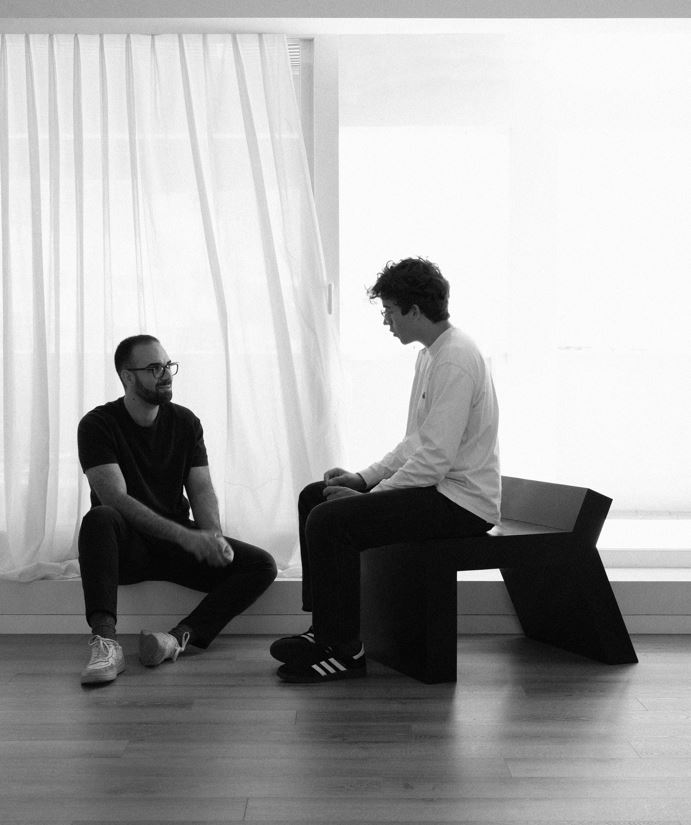In the ongoing quest to achieve the perfect symbiosis with nature and architecture, some innovative proposals are captivating architects and design enthusiasts alike, namely cabins.
Architecture that blends into nature is one of today’s most appealing and increasingly popular concepts. These unique structures capture the essence of their surroundings. However, they also respect and harmonise with their environment. As such, they provide an incomparable architectural experience. In this blog, we’ll be exploring how architecture that blends into nature is transforming the way we perceive and experience the built environment.
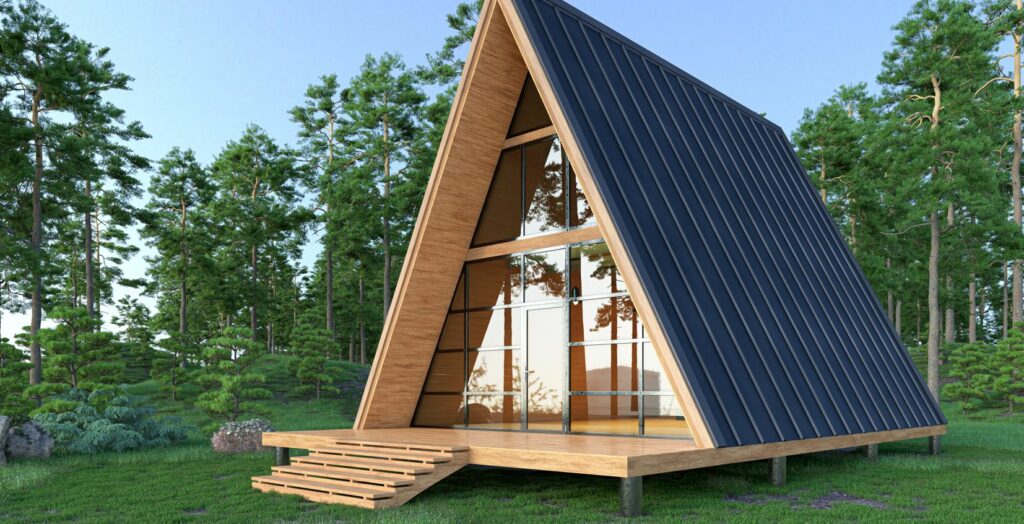
Illustration 1- Outdoor cabin frame in the forest. Image from iStock.
The symbiosis with nature and architecture
The idea of cabins at one with nature considers that human constructions should respectfully integrate in the landscape rather than impose on it. Architects who subscribe to this approach seek to create buildings that blend harmoniously with the environment instead of competing with it. To achieve this, they carefully consider factors such as climate, topography and biodiversity in the cabin designs. In this way they ensure that they will become a harmonious extension of the natural environment.
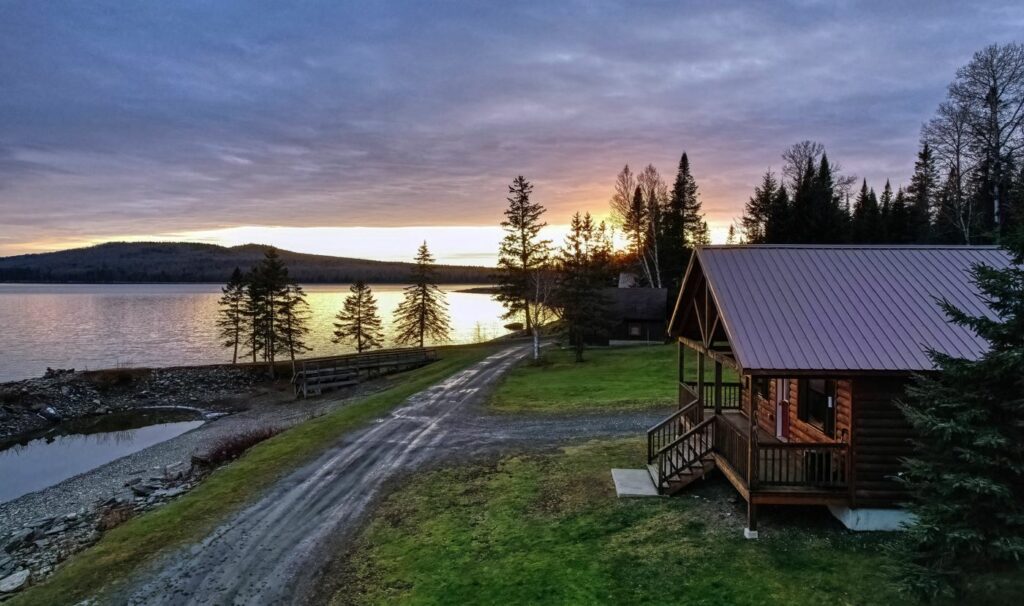
Illustration 2- Lakefront cottage. Image from iStock.
These cabins exemplify the concept of architecture and nature in unison, respecting the intrinsic beauty and lore of the landscape. Architects are seeking to incorporate sustainable solutions. These include the use of local materials and energy efficiency to minimise the environmental impact of construction. In addition, these structures represent more than a respectful reflection of the environment. In fact, they also serve as a refuge, inviting contemplation and a connection with nature. In this way they can provide an inspirational experience for their occupants. The philosophy behind these cabins that blend into nature requires architects to consider their responsibility and connection with the natural environment. This is essential throughout every step of the creative process. Consequently, they show how architecture can be a positive force for conserving and protecting our environment.
The Choice of Materials: Sustainability and Aesthetics
A fundamental characteristic of cabins that are at one with nature is the careful selection of construction materials. Architects who embrace this approach prioritise sustainability and environmental responsibility. They choose local materials with low environmental impact, that respect biodiversity and the integrity of the surrounding ecosystem. Wood from sustainably managed forests such as bamboo or FSC certified timber is a popular choice due to its sustainability and natural beauty.
Recycled and recovered materials are also used, such as recycled steel or recovered stone. Thus, the environmental impact of construction is further reduced. These materials do more than just create the cabins’ unique aesthetic. They also demonstrate a commitment to conserving the environment.
Examples of cabins that merge with nature
Among the architectural marvels scattered across the globe, one group of unique cabins is striking for an ability to merge with their natural environment. These cabins, inspired by the beauty of their woodland location represent the perfect balance between human design and the natural environment.
One impressive example is the “The Mirrorcube” in Sweden, a cabin that perfectly mimics the woods thanks to its mirror-clad external walls. By reflecting the trees and sky, it becomes an almost invisible part of the landscape. As a result residents can feel as if they are living in the midst of an undisturbed natural landscape.
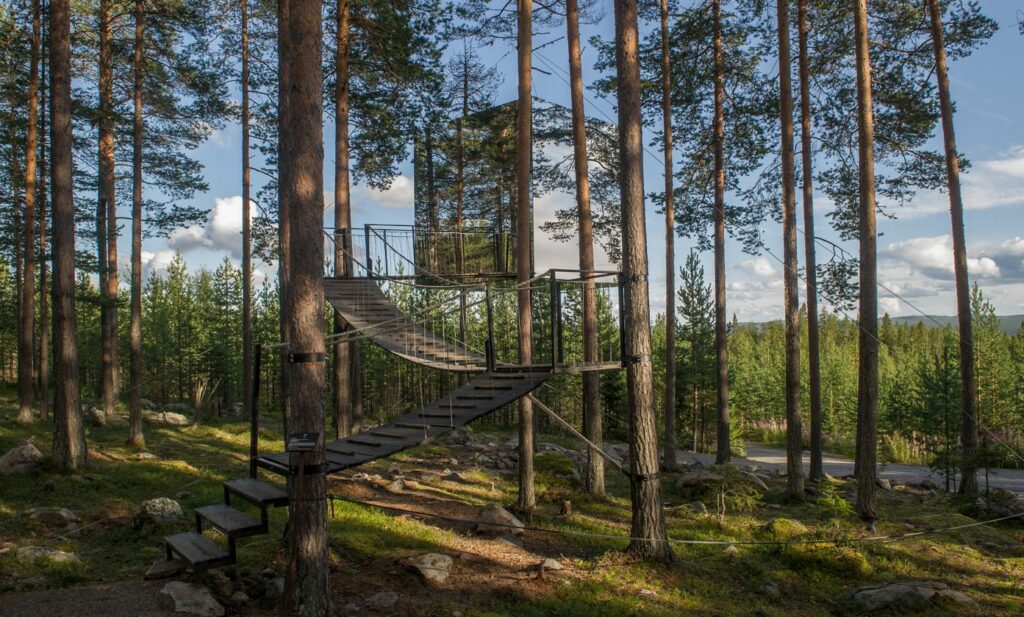
Illustration 3 – Mirrorcube, a modern house in the forest of Harads (Sweden). Image from Shutterstock.
Another fascinating example is the “Forest Retreat” in India, a wonderful example of the creative use of natural materials. The architects have achieved a unique symbiosis with the trees, allowing the branches to integrate harmoniously with the structure. This offers visitors the unique experience of living in the tree tops, surrounded by the forest’s exuberant plant life.
In Canada, we come upon the impressive “Free Spirit Spheres” on Vancouver island. In defiance of traditional housing convention, these cabins are suspended between the trees. Accordingly, they offer an intimate and immersive experience in the heart of nature. Visitors can integrate in the magical, tranquil environment, resting and chilling in these suspended spheres.
Some very unusual cabins
Nonetheless, one of the most outstanding projects is the “Treehotel” in Sweden, This collection of cabins has been meticulously designed. It is an innovative complex, strategically located in the forest close to Harads in Sweden. It is an extraordinary example of eco-friendly architecture. Each cabin at the Treehotel has a unique design, from the “Mirrorcube”, which is covered in mirrors, to the “Hobbit House”, inspired by J.R.R. Tolkien’s famous novel.
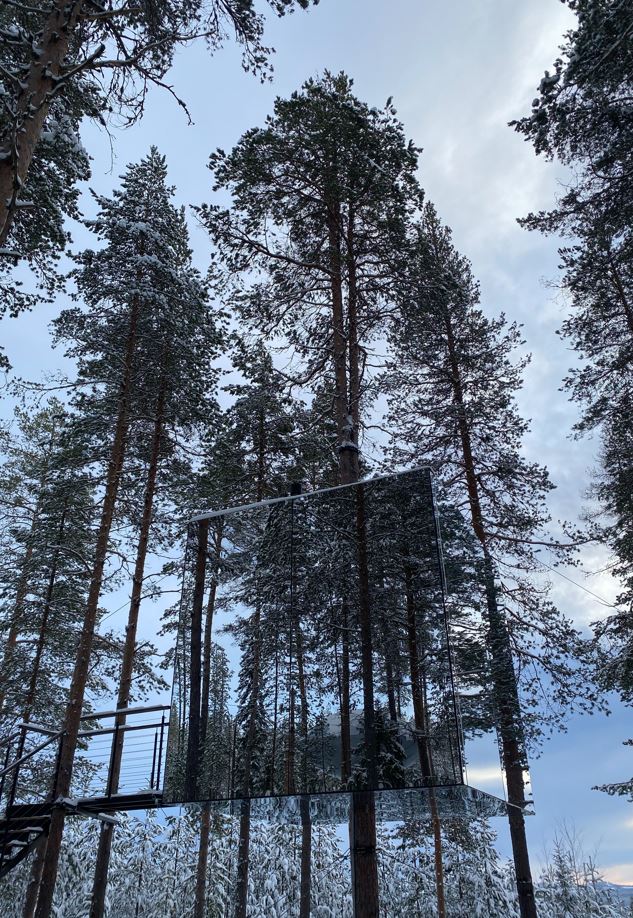
Illustration 4 – One of TreeHotel’s eight treetop cabins in Harads, Sweden. Image from Shutterstock.
“Hobbit House” is one of the most enchanting cabins in the complex. Inspired by the architecture of Middle Earth, this cabin has a rounded, welcoming design with a hobbit-style round door. Principally constructed from natural, sustainable materials such as timber and turf, the “Hobbit House” is perfectly integrated in the surrounding landscape.
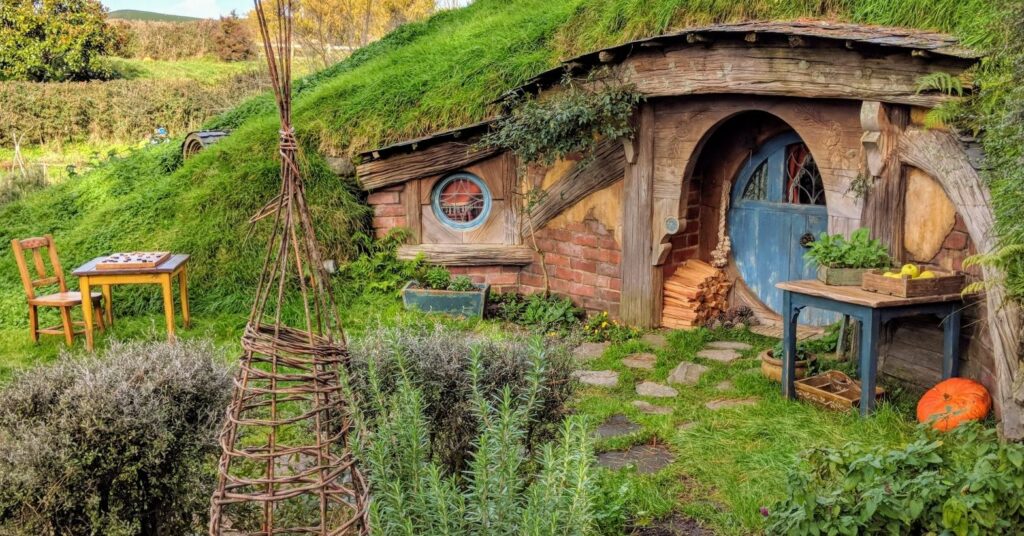
Illustration 5 – Hobbit House. Image from Unsplash.
Inside the cabin, the architectural details continue to impress. From the domed ceiling to the windows carefully placed to frame panoramic views of the forest. Every element was designed to create an unforgettable experience for visitors. The furnishings continue the theme, with handcrafted details and modern conveniences to create a comfortable and magical stay.
A call to action for architects
The trend for cabins that blend into nature offers a valuable lesson for modern architects. It reminds us that architecture has the power to transcend the merely functional, becoming a way of creating harmony between humankind and nature.
By adopting a more eco-friendly, sustainable approach to our projects, we can design buildings that are truly inspiring. In this way we can contribute to a more balanced and respectful relationship with our surroundings.
Architecture in harmony with nature, particularly cabins that merge with the landscape, invites us to rethink relations between individuals and their built environment. These buildings show that it is possible to create spaces that are both functional and aesthetically striking. Yet they also manage to avoid compromising the natural beauty that surrounds us. These examples of cabins that blend into nature are just the tip of the iceberg. It is exciting to think about the future possibilities that this trend has to offer architecture and our connection with the natural world.

